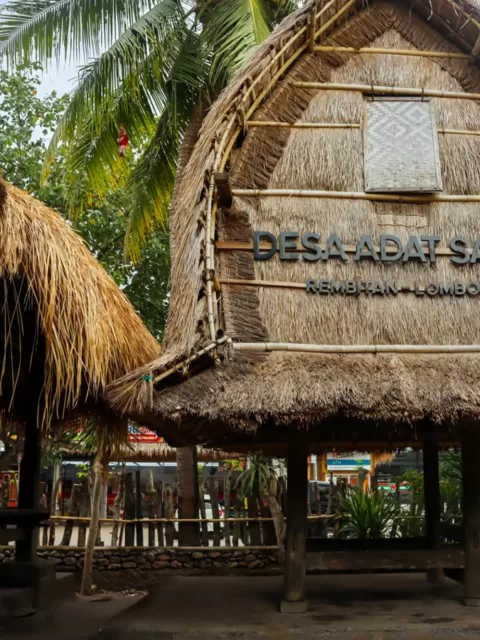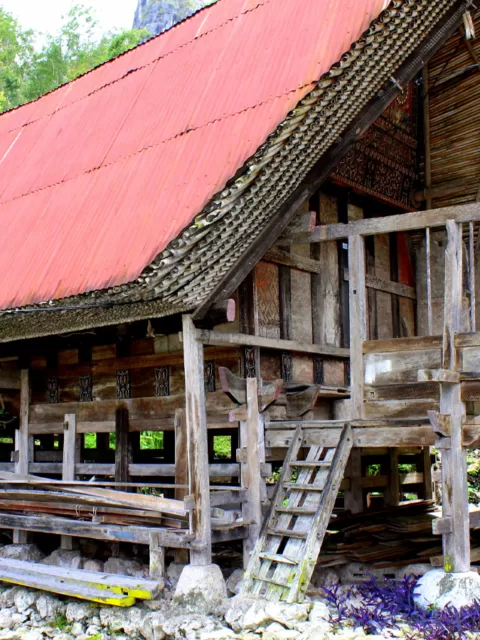Malioboro Street: Where Yogyakarta’s Culture and Shopping Converge
Introduction to Malioboro Street
Malioboro Street, a bustling thoroughfare in the heart of Yogyakarta, Indonesia, is a vibrant tapestry of culture and commerce. It is a street where tradition and modernity coexist seamlessly, offering visitors a unique and unforgettable experience.
Malioboro’s significance in Yogyakarta’s history
Malioboro has a rich history dating back to the 18th century when it was founded as a royal avenue by the Sultan of Yogyakarta. The street was originally a horse track that led to the Kraton, the royal palace. Over time, Malioboro Street evolved into a bustling commercial center, attracting merchants and traders from all over Java and beyond.
An overview of the cultural and commercial activities
Today, Malioboro Street is a popular tourist destination, renowned for its diverse cultural attractions and shopping opportunities. Visitors can browse through stalls selling traditional batik, handicrafts, and souvenirs, or shop at modern malls and branded stores. Malioboro Street is also a vibrant cultural hub, with street performers, traditional music, and festivals throughout the year.
First impressions: The bustling energy and diverse crowd on Malioboro
Stepping onto Malioboro Street, one is immediately struck by its vibrant energy and diverse crowd. Visitors from all walks of life mingle amidst the bustling stalls and shops, creating a kaleidoscope of cultures and experiences. The air is filled with lively bargaining, street music, and laughter.

Malioboro’s Rich Historical Roots
The street’s foundation and historical importance to Yogyakarta
Malioboro was founded in the late 18th century by Sultan Hamengkubuwono I, the first sultan of Yogyakarta. The street was originally a horse track that led from the Kraton, the royal palace, to the Dutch Fort Vredeburg. Malioboro Street quickly evolved into a bustling commercial center, attracting merchants and traders from all over Java and beyond.
Landmarks and preserved architecture along Malioboro
Malioboro Street is home to several historical landmarks and preserved architecture, including:
- Tugu Yogyakarta.
- Vredeburg Fortress.
- Gedung Agung.
- Batik Museum.
- Tamansari.
The transformation: From a colonial avenue to a cultural hub
In the early 20th century, Malioboro Street underwent a transformation from a colonial avenue to a cultural hub. The street was widened and modernized, and new buildings, such as the Batik Museum and Tamansari, were constructed. Malioboro Street also became a popular venue for cultural events and festivals.

Shopping Delights on Malioboro
The myriad of street vendors and what they offer
One of the main attractions of Malioboro Street is the myriad of street vendors selling a wide range of goods. Visitors can find everything from traditional batik and handicrafts to souvenirs and modern clothing. The street is also a great place to try local street food and snacks.
Shopping for traditional batik and handicrafts on Malioboro
Malioboro Street is renowned for its traditional batik and handicrafts. Visitors can find a wide variety of batik fabrics, clothing, and accessories, as well as handicrafts made from wood, bamboo, and other natural materials.

Modern retail experiences: Malls and branded stores
In addition to traditional shops and street vendors, Malioboro Street also features several modern malls and branded stores. Visitors can find a wide range of international brands, as well as Indonesian products.
Experiencing the Culture at Malioboro
Traditional music and street performances that captivate visitors
Malioboro Street is a vibrant cultural hub, with traditional music and street performances throughout the year. Visitors can enjoy traditional Javanese music, such as gamelan and angklung, as well as dance performances and wayang kulit (shadow puppetry).
Festivals and events: How Malioboro comes alive during special occasions

Malioboro Street is a popular venue for festivals and events throughout the year. Some of the most popular events include:
- Sekaten: A two-week festival celebrated during the Islamic months of Maulud and Rabiul Awal. The festival features traditional Javanese music, dance, and wayang kulit performances.
- Grebeg Mulud: A festival celebrated to commemorate the birth of the Prophet Muhammad. The festival features a procession of Gunungan, cone-shaped rice structures, from the Kraton to the Great Mosque of Yogyakarta.
- Grebeg Suro: A festival celebrated to mark the beginning of the new Javanese year. The festival features a procession of Gunungan from the Kraton to the Parangkusumo Beach.
The local cuisine: Street foods and culinary treasures to try
Malioboro Street is a great place to try Yogyakarta’s local cuisine. Visitors can find a variety of street food vendors selling snacks and dishes such as:
- Gudeg: A sweet and savory dish made from jackfruit, coconut milk, and spices.
- Satay: Skewers of grilled meat served with peanut sauce.
- Bakmi Jawa: Javanese-style noodles served with a sweet and savory sauce.
- Kopi Joss: A local coffee drink made with charcoal.
Architectural Gems along Malioboro
A walk through heritage: Colonial buildings and Javanese architecture
Malioboro Street is home to several architectural gems, including colonial buildings and traditional Javanese architecture. Some of the most notable examples include:
- Tugu Yogyakarta: An iconic obelisk that marks the zero point of Yogyakarta. The obelisk was built in 1755 by Sultan Hamengkubuwono I to commemorate the founding of Yogyakarta.

- Vredeburg Fortress: A former Dutch fort that was built in the 18th century. The fort now houses a museum that tells the story of Yogyakarta’s history.

- Gedung Agung: The former governor’s mansion, which was built in the 19th century. The mansion now hosts official government functions and events.
- Batik Museum: A museum dedicated to the art of batik. The museum features a collection of batik fabrics, clothing, and other artifacts.
- Tamansari: A former royal water garden that was built in the 18th century. Tamansari is a popular tourist destination, known for its beautiful gardens and water features.
Malioboro at Night
The transformation from daytime shopping to nighttime revelry
When the sun sets, Malioboro Street transforms from a bustling shopping district to a nighttime hub of revelry. The street is illuminated by colorful lanterns and street lights, creating a magical atmosphere.

Evening markets and the allure of nighttime shopping on Malioboro
Evening markets are set up along the street, selling everything from souvenirs to street food. Visitors can also enjoy live music and cultural performances at various venues.

Live music and cultural performances under the stars
Malioboro Street is a great place to experience the vibrant culture of Yogyakarta at night. Visitors can enjoy live music performances, traditional dances, and wayang kulit performances at various venues along the street.

Eco-Friendly Initiatives on Malioboro
Pedestrian-only zones and the push for a cleaner Malioboro
In recent years, the Yogyakarta government has implemented several eco-friendly initiatives on Malioboro Street. These initiatives include creating pedestrian-only zones and encouraging the use of sustainable products.

Eco-friendly shopping options: Sustainable products and green shops
Visitors to Malioboro Street can now find a variety of eco-friendly shopping options. There are several green shops that sell sustainable products such as organic clothing and bamboo handicrafts.
Local efforts to maintain the street’s charm amid modernization
The local community is also working to maintain Malioboro Street’s charm amid modernization. There are several initiatives underway to reduce pollution and waste on the street.
Tips for Travelers on Malioboro
Best times and days to visit for a full cultural experience
The best time to visit Malioboro is during the evening, when the street is transformed into a vibrant hub of cultural activity. Visitors can enjoy live music performances, traditional dances, and wayang kulit performances at various venues along the street.
Essential packing and shopping tips for Malioboro
Here are some essential packing and shopping tips for Malioboro Street:
- Pack comfortable shoes: You will be doing a lot of walking on Malioboro Street, so it is important to pack comfortable shoes.
- Bring a bargaining spirit: Bargaining is expected on Malioboro Street, so don’t be afraid to haggle for the best prices.
- Be aware of your surroundings: Malioboro Street is a crowded place, so it is important to be aware of your surroundings and keep your belongings close to you.
- Shop around: There are many different shops and stalls on Malioboro Street, so it is worth shopping around to get the best prices.
Navigating the street: Transportation and walking tips
Malioboro Street is easily accessible by public transportation. Visitors can take a bus, taxi, or becak (bicycle taxi) to the street. Horse carriages or Andong also available to rent for accommodating you within the Malioboro.
If you are planning on walking around Malioboro Street, be aware that the street can be crowded and chaotic. It is best to avoid walking around during the hottest part of the day.

Here are some walking tips for Malioboro Street:
- Start your walk at the Tugu Yogyakarta: The Tugu Yogyakarta is an iconic landmark that marks the zero point of Yogyakarta.
- Walk north towards the Kraton: The Kraton is the royal palace of Yogyakarta.
- Walk south towards the Vredeburg Fortress: The Vredeburg Fortress is a former Dutch fort that now houses a museum.
- Be sure to stop and enjoy the street performers and vendors along the way.
Conclusion: Malioboro as Yogyakarta’s Heartbeat
Malioboro Street is a vibrant and pulsating heart of Yogyakarta. It is a place where tradition and modernity meet, creating a unique and unforgettable experience for visitors.
Malioboro Street is a must-visit destination for anyone interested in Indonesian culture and history. Visitors can experience everything from traditional batik shopping to live music performances to street food delights.
Whether you are looking for a souvenir to take home or simply want to soak up the atmosphere, Malioboro Street has something to offer everyone. So come and experience the magic of Malioboro Street for yourself!












